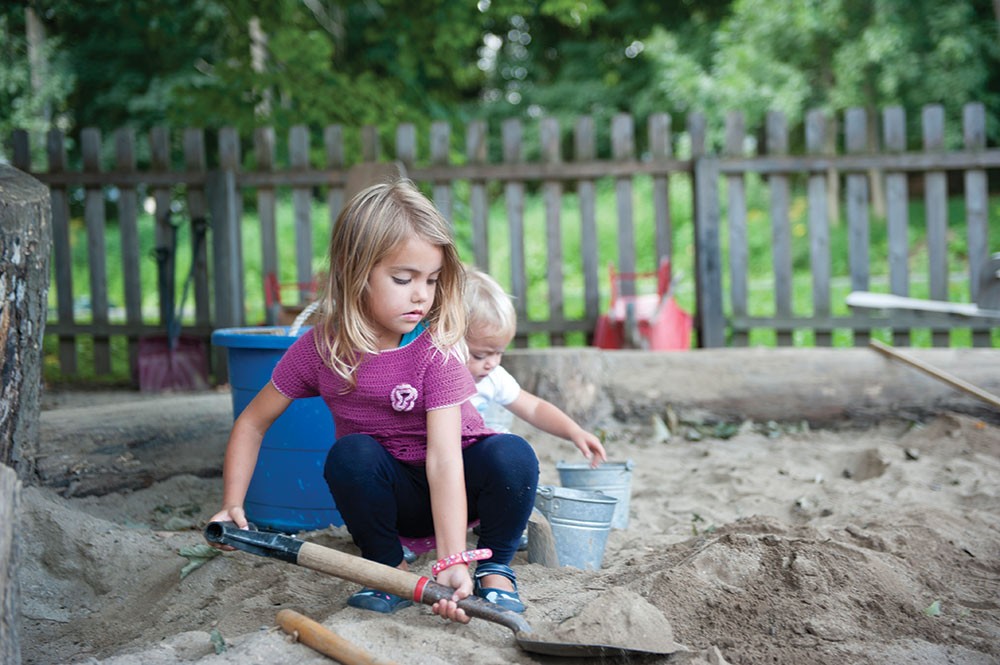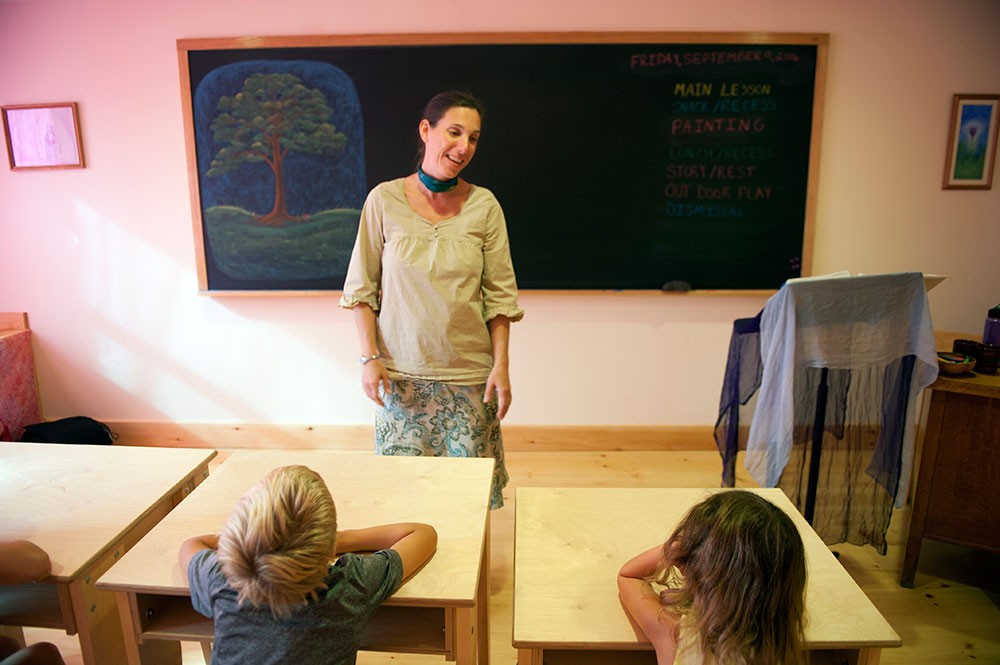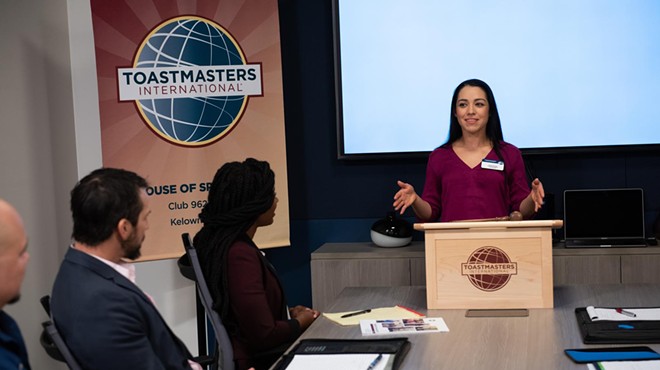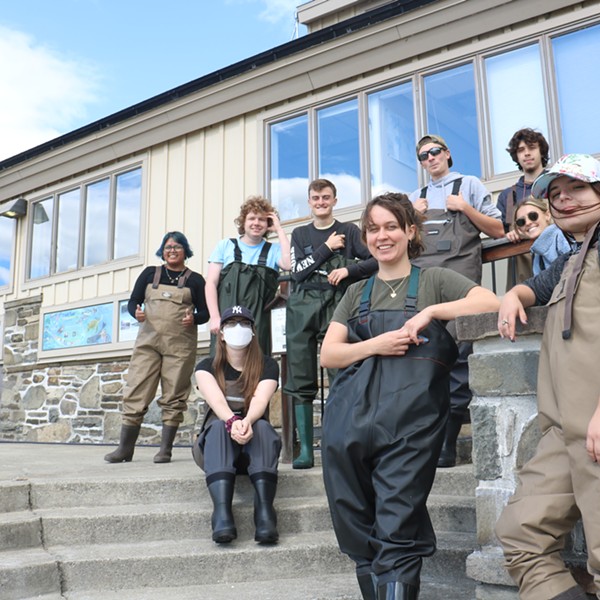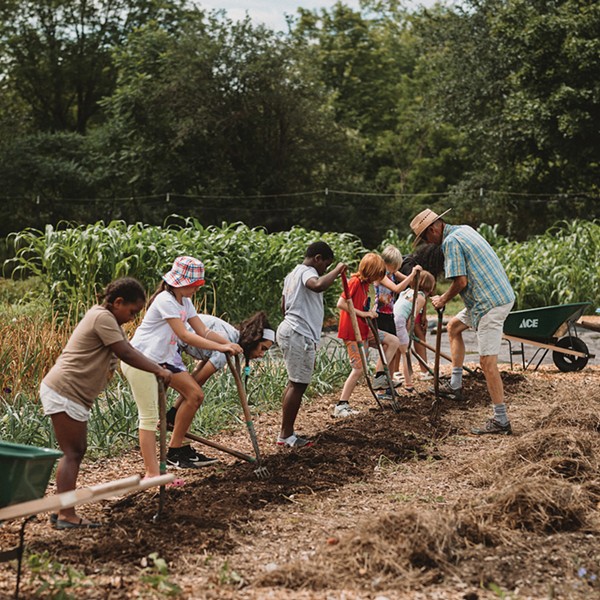Christine Good faces the children, prompting them to retell a story she told them yesterday about a boy and some curved lines. It leads to a hunt for all the curved lines they can find in the room: of their ears, of rose petals, and of chalkboard erasers. Then Good distributes a sheet of paper to each. They unroll fabric pouches that hold a pocket for each crayon, and draw curved lines free-form, and then again in a traditional C-shape across the bottom margin from left to right. "The essence of it is that from the picture, a letter emerges," Good explains.
It's an early literacy lesson that's quite different from what we might be used to. In recalling the story, the children are learning sequencing and how to build pictures in their minds (the basics of reading comprehension). In form drawing, students work with the shape of letters in a tactile way (the precursor to writing). All without an alphabet poster anywhere in the room. It brings images from the oral story onto the page through a holistic learning experience that builds over time, until students realize the connection between letter symbols and their sounds and shapes. "It's the most exciting moment in first grade," says Good. "You don't even have to teach it; they come to it."
This is reading readiness at Primrose Hill School in Rhinebeck, where first graders are often not yet reading. Inspired by the Waldorf philosophy, preliteracy at Primrose Hill is developed by saturating children in language over the course of several grades through free play, puppet shows, storytelling, song, and learned verses. To introduce letters, Waldorf-trained teachers tell a story for each, incorporating eurythmy, a movement style that associates a gesture with the letter's sound. Jordan Walker, enrollment coordinator at Primrose Hill explains, "Guided by the observation that young children naturally imitate the world around them, the teachers carefully prepare the educational environment—that's the way the teaching happens."
Reading and math are two of the first forms of abstract thinking that kids are asked to master, and a cultural anxiety around that has influenced how they're taught. Benchmarks and timelines for learning these skills are expressed in Common Core standards, with an emphasis on decoding and computation emerging in kindergarten curricula. It's causing critics to call kindergarten the new first grade.
But some educators feel that, just like learning to walk or talk, learning to read, write, and problem solve are activities that kids are naturally compelled to do. So certain educational strategies embrace each child's pace, and approach the three Rs through individualized scaffolding of a child's natural curiosity.
According to a report out of Sarah Lawrence College, "Reading Instruction in Kindergarten: Little to Gain and Much to Lose," which draws upon a number of long-term studies, "Young children take years to build the foundation they need to be able to make sense of print. An important aspect of this process is being able to understand these abstract symbols. Children learn that real things can be represented by symbols when they play and use hands-on materials."
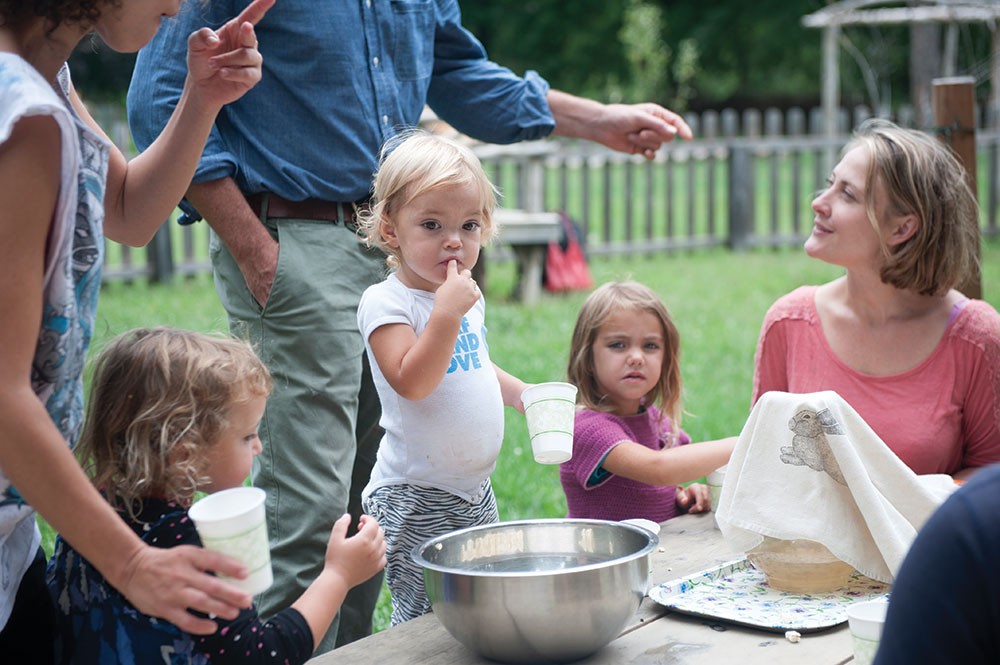
"I know there's a fear around this because there is this societal pressure that earlier is better," says Good. "But often the children, from my experience, who are not pushed to read too soon are better readers, and they often love it." At the heart of the Waldorf strategy is a trust that, given time and rich, meaningful experiences in learning, children will unfold. "We're not focusing on early intellectualization," says Wendy Weinrich, a Waldorf-certified teacher for the past 20 years, whose early childhood school, Mountaintop, now in Saugerties, is just beginning its 10th school year. "When a child is ready, the concepts are easier to grasp."
When students hear the same story each day, they're forming reading comprehension through building imagination. Teachers will notice them acting out the story's themes in their play later, internalizing the lesson. "We take the children exactly where they are on their developmental journey and guide them," says Christianna Riley, Primrose Hill's kindergarten teacher. At its core, the Waldorf preliteracy approach holds space for children to develop curiosity around reading through experiential learning. At Primrose Hill, kids are not being taught to read; they're being taught to discover reading.
Reconstructing Math
"We don't take babies and make them learn verb conjugation charts, but they learn to speak. Yet we take eight-year-olds and make them memorize multiplication tables," muses Holly Graff, a contributor to Playing with Math: Stories from Math Circles, Homeschoolers, and Passionate Teachers. She's a certified teacher who tutors homeschoolers along with her own two children in Montclair, New Jersey. For Graff, math is a language, and math lessons are about fluency. She feels that a focus on calculation, arithmetic, and operations done with worksheets decontextualizes math from its purpose: to describe the natural world. Graff encourages a visual and physical exploration of mathematics through hands-on activities and games because her students discover the math concepts that way.
For example, as a younger child, Graff's daughter, Lucia, now 15 and in her 10th year of homeschooling, discovered while working with small, colorful tiles that a square number results in the formation of an actual square. It suited Lucia's visual learning style better than a worksheet ever could. "With pencil and paper, some parts of your brain are taking a break," Graff says with a smile. "Rather than presenting math as a set of steps to follow, like a recipe, I think of it as a vocabulary that you can manipulate to say whatever you need."
The thinking is similar to something Graff has formally offered before: a math circle. Locally, there's the Bard Math Circle (BMC), which runs both on the Bard College campus in Annandale-on-Hudson and at local libraries. "It's a noncompetitive math enrichment environment, and we bring in a lot of puzzles and games that are based on mathematics and logic," says Japheth Wood, a visiting associate professor of mathematics at Bard who, along with Associate Professor Lauren Rose, runs the BMC. After each circle, there's always a math artifact for kids to bring home. This summer at CAMP (Creative and Analytical Math Program) the focus was on fractals, so they folded paper into a Sierpinski triangle, an equilateral triangle with a self-referential pattern that was named for the Polish mathematicianWaclaw Sierpinski. Around Valentine's Day, they make mathematical hearts.
BMC is geared for the middle-school set, but the experiential learning happening in math circles is often well-suited to early childhood as well. BMC's circle offers community and collaboration, and counterbalances some of the negative peer pressure that drives some kids, especially girls, away from mathematics. The idea is to explore math's creative side, so students can take that inspiration back to the classroom with them. "If they nurture a joy of learning, which is one of our big goals," says Wood, "then they'll thrive in any sort of educational environment."
The first question presented at BMC is usually a hook to introduce a concept or technique in as accessible a way as possible. The following problems develop the idea, often growing in challenge. There's usually more than one solution, depending upon the approach, and the theme being explored is a hint. The active learning happening at BMC, through discussion and problem solving, engages students in analyzing and synthesizing content. They're developing a mathematician's perspective, one of logic and experimentation.
Volunteer undergraduates from Bard's math department demonstrate solutions to BMC problems, opening up advanced concepts for participants. "A couple years ago, one of the Bard students solved almost every problem using different mathematical tables. I couldn't believe how powerful it was—tables are not something I regularly relied on," says Sheila Shaffer, a math specialist at Bailey Middle School in Kingston who has been attending the Teachers' BMC since it started at the Kingston Library. Shaffer services students who struggle with math and teaches intervention classes. "My own math tool kit has expanded greatly by participating." She feels that the math happening at math circles helps students and teachers have fun with it, and supports the Common Core standards being taught in classrooms. "Common Core requires understanding of why the procedures or algorithms work, which, in the long run, makes all math easier to understand."
For Graff, the "why" or meaning of math can be found in cultural context. She likes to connect students with the idea that math is a construct of generations of people who, through trial and error, described, recorded, measured, and built concepts important to the world. It's how she encourages in her students mathematical thinking. Eventually, her younger daughter, Havilah, now three, and homeschooling friends might use knotted ropes to measure right angles like the Egyptians; discover through flower observations the Fibonacci sequence, where every number is the sum of the two preceding numbers; and measure object heights indirectly by measuring the length of their shadows. Right now, Graff simply looks for opportunities to immerse the day in math so Havilah can develop comfort and fluency. "It arises so naturally and organically," she says. How many cookies does Havilah want? Can mama have one? Now how many does Havilah have?
"Math is all about patterns: finding, creating, searching for patterns," Graff says. "Counting is one of the earliest patterns we become aware of. But there are so many different kinds of patterns. Number theory is only one tiny slice of math." Allowing Havilah to stumble upon her own epiphanies will help her to own the concepts. As with experiential-based reading readiness, developing mathematical thinking encourages children to feel that their learning is meaningful, so they can master new skills, like reading and math, by absorbing them on a deeper level.







